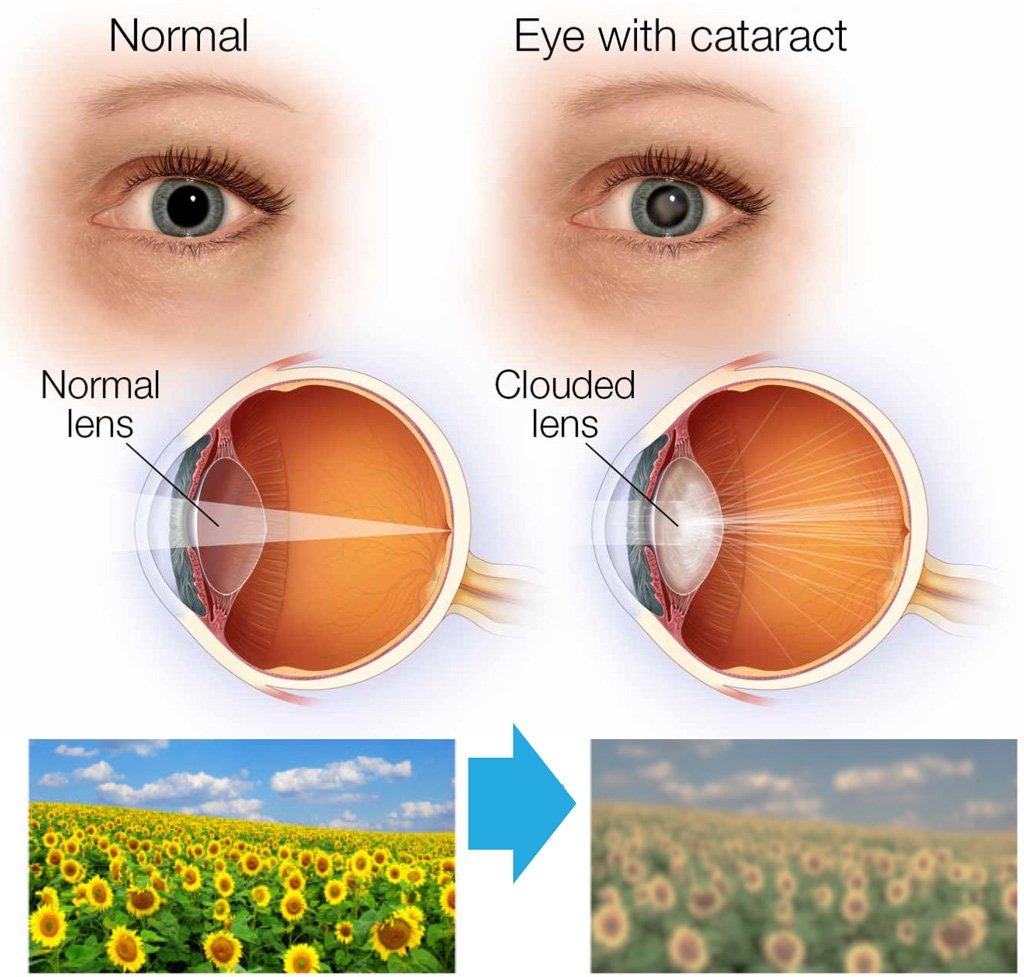Cataracts are a common age-related eye condition that affects the lens of the eye. The lens is a clear, flexible structure that helps to focus light on the retina, the light-sensitive layer of cells at the back of the eye. Cataracts occur when the lens becomes cloudy or opaque, which can cause vision problems.
Symptoms of Cataracts
The symptoms of cataracts can vary, but they may include:
Blurred or hazy vision: Cataracts can make it difficult to see clearly, and objects may appear blurry or hazy.
Difficulty seeing at night: Cataracts can cause glare and halos around lights, which can make it difficult to see at night or in low light conditions.
Changes in color perception: Cataracts can cause colors to appear dull or faded, and they may appear yellow or brown.
Double vision: In some cases, cataracts can cause double vision, where you see two images of the same object.
Frequent changes in glasses or contact lens prescription: If you notice that your glasses or contact lens prescription is changing more frequently than usual, this may be a sign of cataracts.
Treatment for Cataracts
Treatment for cataracts typically involves surgery to remove the cloudy lens and replace it with an artificial lens. This is a safe and effective procedure that can improve vision and reduce the symptoms of cataracts.
The specific type of surgery that is recommended for you will depend on the severity of your cataracts and your overall health. There are several different types of cataract surgery, including:
Phacoemulsification: This is the most common type of cataract surgery. It involves making a small incision in the eye and using ultrasound waves to break up the cloudy lens. The pieces of the lens are then suctioned out of the eye, and an artificial lens is inserted in its place.
Extracapsular surgery: This type of cataract surgery involves making a larger incision in the eye to remove the cloudy lens in one piece. An artificial lens is then inserted through the same incision.
Intracapsular surgery: This is a more invasive type of cataract surgery that is rarely used today. It involves removing the entire lens, including the surrounding capsule, and replacing it with an artificial lens.
Risks of Cataract Surgery
Cataract surgery is a safe and effective procedure that is used to treat cataracts, a common age-related eye condition that affects the lens of the eye. Like any surgery, however, cataract surgery carries a small risk of complications, and it is important to be aware of these potential risks before deciding if the surgery is right for you.
Some potential risks of cataract surgery include:
Infection: As with any surgery, there is a risk of infection with cataract surgery. This can usually be treated with antibiotics, but in rare cases it can lead to more serious complications such as vision loss.
Bleeding: In rare cases, bleeding can occur during or after cataract surgery. This can cause pressure to build up inside the eye, which can be dangerous and may require additional surgery to correct.
Swelling or inflammation: Swelling and inflammation of the eye can occur after cataract surgery, which can cause discomfort and temporary vision loss. In most cases, this will resolve on its own, but in some cases it may require additional treatment.
Retinal detachment: In rare cases, the retina, the light-sensitive layer of cells at the back of the eye, can become detached during or after cataract surgery. This can be a serious complication that can lead to permanent vision loss if it is not treated promptly.
If you are experiencing any of the symptoms of cataracts, it is important to see an Dr. Johnson at iCare Family Vision for an examination. Cataracts can be safely treated with surgery, and early detection and treatment can help to preserve your vision.


